In a strong IMP game you, North, hold
 10 9 8 3 2 10 9 8 3 2 K 8 4 K 8 4 A 8 6 2 A 8 6 2 K K |
| West | North | East | South |
| Pass | 2 | ||
| Dbl | 4 | 5 | Pass |
| Pass | ? |
Neither side is vulnerable. Do you go to 5 or sell out?
My family’s insurance costs — especially for health insurance — are obscenely high, as I suspect yours may be. We often hear that, in high-level competitive auctions, a player “took out insurance” by bidding one more. The cost of such insurance may not rival that of a major medical plan, but it’s hefty enough to demand careful consideration.
When today’s deal appeared in an expert IMP game on OKbridge in October, North had to judge.
| |||
|
| ||
| |||
While North is thinking, let’s try to apply the ubiquitous Law of Total Tricks. North knows his side has 11 spades. He is sure East-West have at least nine clubs and may have 10. Assuming 21 total trumps, if East-West can make 5, North-South will be down only one at 5
. Perhaps North can beat5
a trick, but then his side will (or so suggests the Law) make 5
. All this suggests that North should buy insurance — he has more to gain by bidding than to lose.
But North did no such thing, of course. No matter what anyone says, the Law is no substitute for judgment, and North exercised his. Unless South had one of those magic hands that partners never hold, he wouldn’t make 5.Against 5
North could expect to score the
A and the
K. He might win a trick with the
K, and South might win a spade trick.
Moreover, the cost of insurance was high. If 5 made and 5
was down one (doubled, presumably), North could gain 7 IMPs by bidding. But if both 5
and 5
were down one (as was possible if East-West had only a nine-card club fit), North could lose 4 IMPs by bidding. The odds weren’t good enough for North — he passed.
A problem with the Law of Total Tricks is that it assumes perfect play and defense. South led their singleton 10, and East grabbed dummy’s ace and led the
Q. Perhaps this was a “discovery play” — East was trying to place the high spades. When North played low, East might indeed have assigned South both the ace and the king. So I thought East might drop North’s
Kand make 5
, but he perversely let the
Q ride. North produced the king, cashed his
K and gave South a heart ruff. The
A had to score for down two.
You can see that 5 should also be two down. If West cashes his ace and leads a second heart, South can throw a diamond on the
K, draw trumps, strip the clubs and hearts, and lead a diamond to the ace. But if East unblocks his king, avoiding an endplay, South loses two diamonds.
So although there were 21 total trumps, there were, in practice, only 18 tricks. The deal was not a good advertisement for the Law.

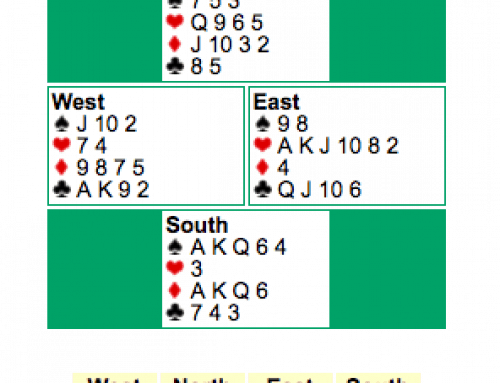
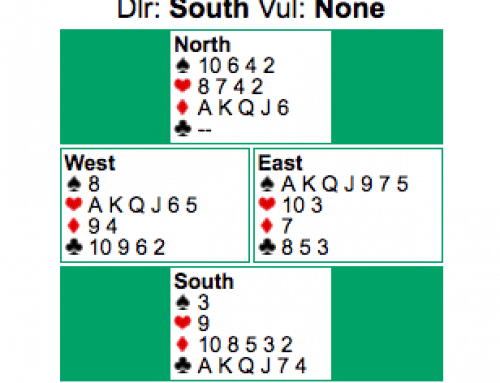

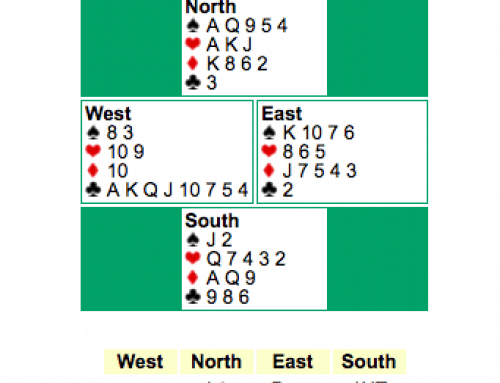
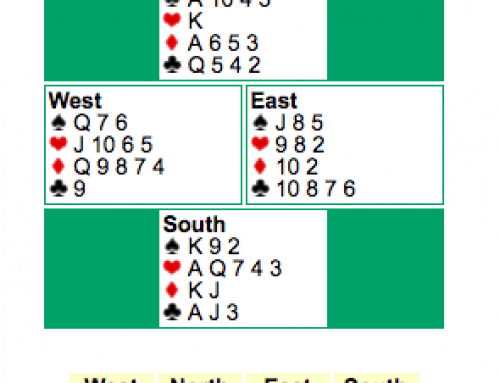
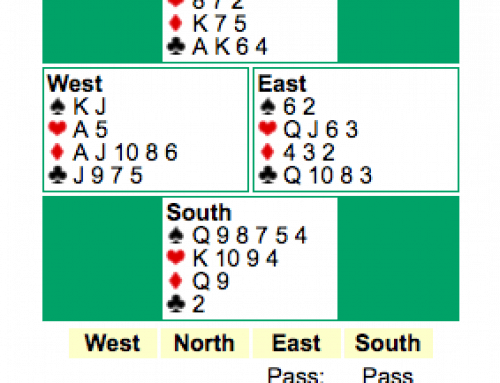

Leave A Comment